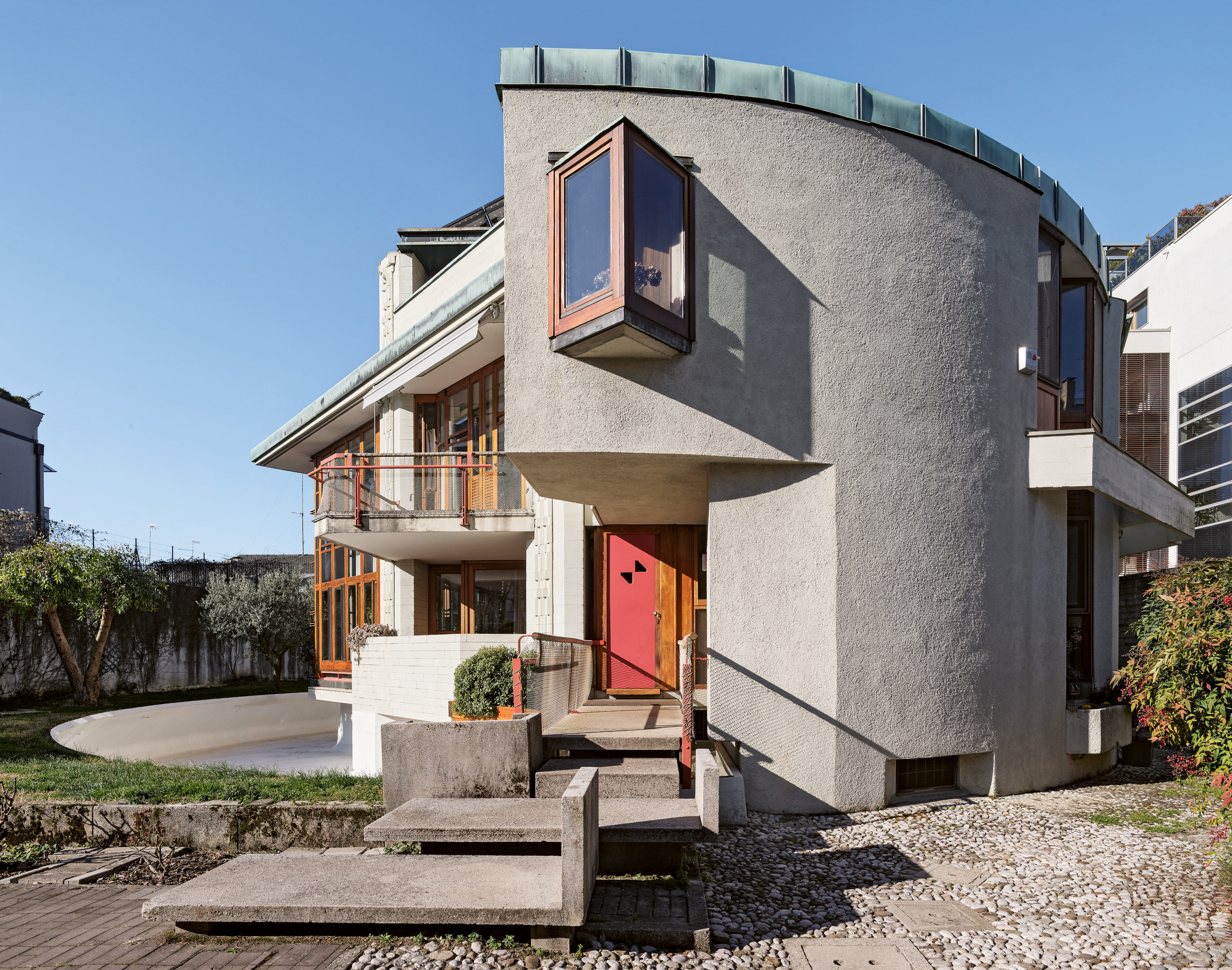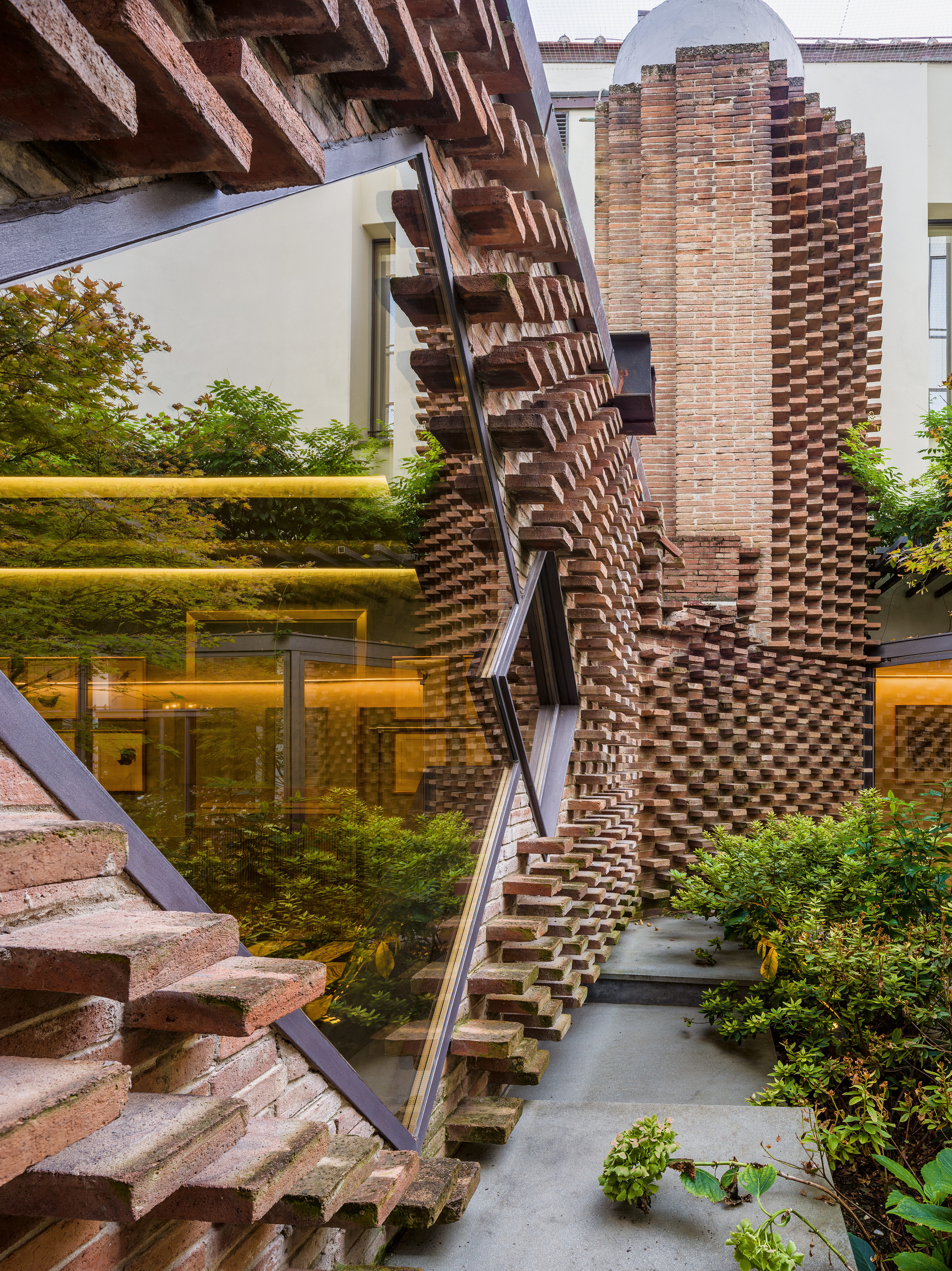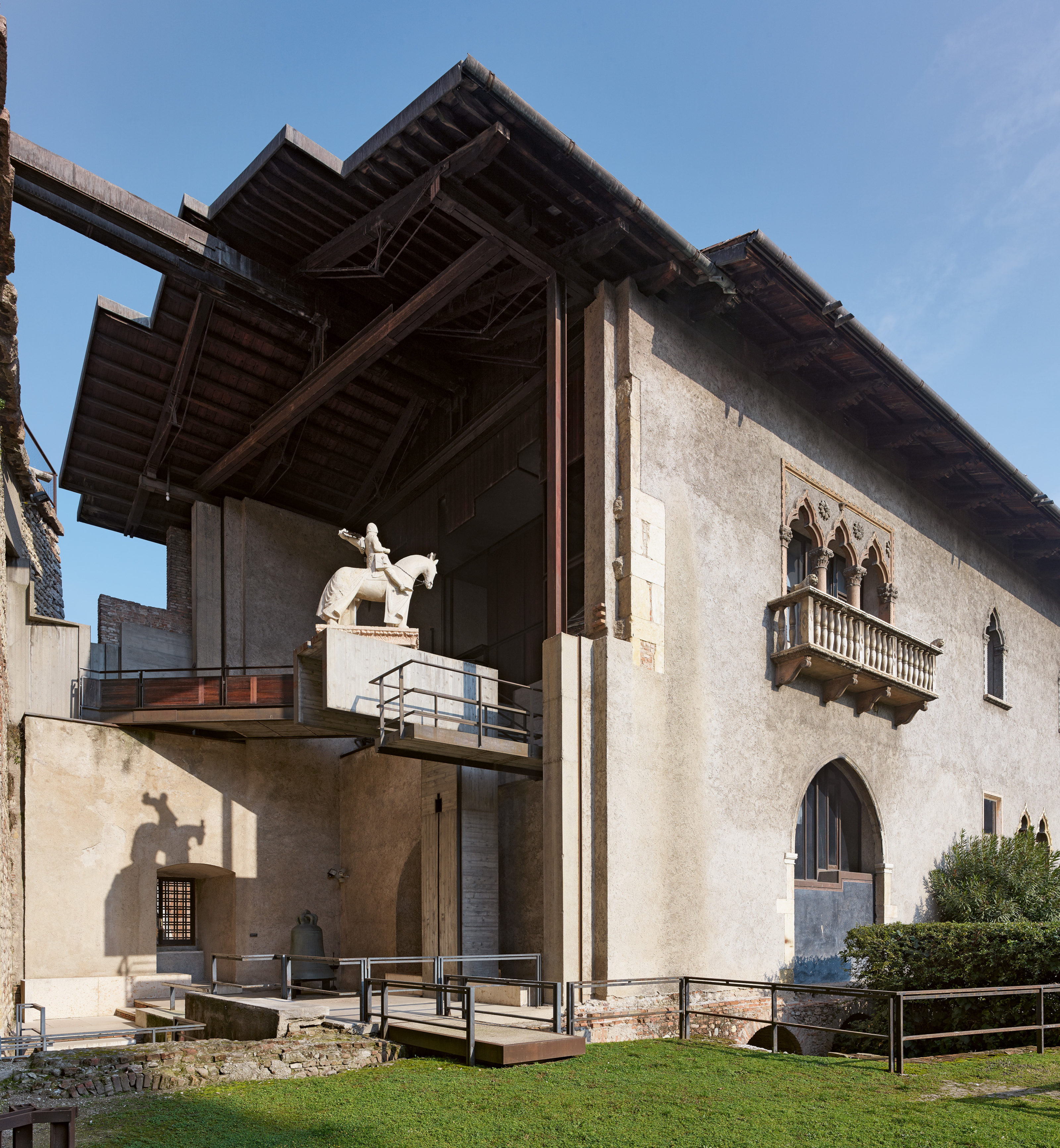‘Carlo Scarpa: The Complete Buildings’ is an essential tour of the Italian master’s works
‘Carlo Scarpa: The Complete Buildings’ is the perfect book for architecture enthusiasts

Even before getting their hands on Carlo Scarpa: The Complete Buildings, the Italian master architect's work should be familiar to Wallpaper* readers. From masterpieces like the Brion-Vega Cemetery in San Vito d'Altivole, near Treviso, to smaller works like the Olivetti Showroom in St Mark’s Square, Venice, everything Carlo Scarpa touched had a diversity of form, materiality and invention that synthesised both old and new and craft and technology. This publication, a notable new architecture book for 2024, explores all these themes, and more.

Additions to the Villa il Palazzetto, Monselice, Padua, Italy, 1971–78
Flicking through ‘Carlo Scarpa: The Complete Buildings’
Born in 1906, Scarpa worked across a wide range of scales, from shop-fitting to furniture, mausoleums to expansive restorations and extensions. His wasn’t an especially high-profile career, and at the time of his death in 1978, Scarpa had been substantially forgotten. Only the most acutely aware architects had come to appreciate Scarpa’s distinctly uncategorisable path between the frequently warring factions of modernism, post-modernism and traditionalism.

Olivetti Showroom, Venice, Italy,1957–58
The Complete Buildings shows why this quiet veneration has evolved into full-blown obsession in modern times. From his seamless work in ancient cities like Venice, to his appreciation and collaboration with traditional artisans, and knowledge of far-flung craft and design traditions, particularly Japan, Scarpa continues to have an influence on everything from contemporary art to the work of current architecture and interiors.

Villa Veritti, Udine, Italy, 1955–61
The photography is by Cemal Emden, an architect who brings a trained eye to this portfolio, just as he did with earlier monographs on Louis Kahn and Le Corbusier. Over 200 images chronicle the extent of Scarpa’s surviving work, all of which is in Italy. Emden’s camera is especially focused on the architect’s remarkable detail design, the way different materials, textures and even eras were combined to make an ever richer whole.

Courtyard Grand Hotel Minerva, Florence,Italy, 1958–61. Carlo Scarpa with Edoardo Detti
Scarpa’s design legacy is continued by his son Tobia Scarpa, but it is also an increasingly powerful influence on contemporary practice. With skilful refurbishment becoming an ever more important part of modern architectural practice, this essential monograph shows us a bold and creative way forwards.

Museo di Castelvecchio, Verona, Italy, 1957–64; 1967–75
'Carlo Scarpa: The Complete Buildings,' photography by Cemal Emden, edited by Emiliano Bugatti with texts by Jale N. Erzen
Prestel Publishing, RRP £50, Amazon.co.uk
Wallpaper* Newsletter
Receive our daily digest of inspiration, escapism and design stories from around the world direct to your inbox.
Jonathan Bell has written for Wallpaper* magazine since 1999, covering everything from architecture and transport design to books, tech and graphic design. He is now the magazine’s Transport and Technology Editor. Jonathan has written and edited 15 books, including Concept Car Design, 21st Century House, and The New Modern House. He is also the host of Wallpaper’s first podcast.
-
 A stripped-back elegance defines these timeless watch designs
A stripped-back elegance defines these timeless watch designsWatches from Cartier, Van Cleef & Arpels, Rolex and more speak to universal design codes
By Hannah Silver
-
 Postcard from Brussels: a maverick design scene has taken root in the Belgian capital
Postcard from Brussels: a maverick design scene has taken root in the Belgian capitalBrussels has emerged as one of the best places for creatives to live, operate and even sell. Wallpaper* paid a visit during the annual Collectible fair to see how it's coming into its own
By Adrian Madlener
-
 Move over, palazzos. Performances were the biggest trend at Milan Design Week
Move over, palazzos. Performances were the biggest trend at Milan Design WeekThis year, brands brought on the drama via immersive installations across the city
By Dan Howarth
-
 2026 Olympic and Paralympic Torches: in Carlo Ratti's minimalism ‘the flame is the protagonist’
2026 Olympic and Paralympic Torches: in Carlo Ratti's minimalism ‘the flame is the protagonist’The 2026 Olympic and Paralympic Torches for the upcoming Milano Cortina Games have been revealed, designed by architect Carlo Ratti to highlight the Olympic flame
By Ellie Stathaki
-
 Anni Albers' weaving magic offers a delightful 2-in-1 modernist showcase in Milan
Anni Albers' weaving magic offers a delightful 2-in-1 modernist showcase in MilanA Milan Design Week showcase of Anni Albers’ weaving work, brought to life by Dedar with the Josef & Anni Albers Foundation, brings visitors to modernist icon, the BBPR-designed Torre Velasca
By Ellie Stathaki
-
 Milan Design Week: ‘A Beat of Water’ highlights the power of the precious natural resource
Milan Design Week: ‘A Beat of Water’ highlights the power of the precious natural resource‘A Beat of Water’ by BIG - Bjarke Ingels Group and Roca zooms in on water and its power – from natural element to valuable resource, touching on sustainability and consumption
By Ellie Stathaki
-
 This Milan Design Week installation invites you to tread barefoot inside a palazzo
This Milan Design Week installation invites you to tread barefoot inside a palazzoAt Palazzo Litta, Moscapartners and Byoung Cho launch a contemplative installation on the theme of migration
By Ellie Stathaki
-
 The upcoming Zaha Hadid Architects projects set to transform the horizon
The upcoming Zaha Hadid Architects projects set to transform the horizonA peek at Zaha Hadid Architects’ future projects, which will comprise some of the most innovative and intriguing structures in the world
By Anna Solomon
-
 Is biodesign the future of architecture? EcoLogicStudio thinks so
Is biodesign the future of architecture? EcoLogicStudio thinks soWe talk all things biodesign with British-Italian architecture practice ecoLogicStudio, discussing how architecture can work with nature
By Shawn Adams
-
 Meet Carlo Ratti, the architect curating the 2025 Venice Architecture Biennale
Meet Carlo Ratti, the architect curating the 2025 Venice Architecture BiennaleWe meet Italian architect Carlo Ratti, the curator of the 2025 Venice Architecture Biennale, to find out what drives and fascinates him ahead of the world’s biggest architecture festival kick-off in May
By Ellie Stathaki
-
 The brutal harmony of Villa Caffetto: an Escheresque Italian modernist gem
The brutal harmony of Villa Caffetto: an Escheresque Italian modernist gemThe Escheresque Italian Villa Caffetto designed by Fausto Bontempi for sculptor Claudio Caffetto
By Adam Štěch